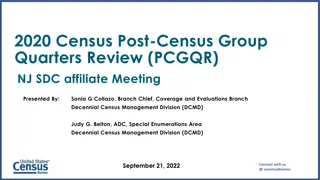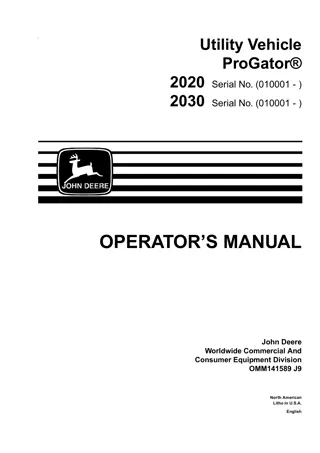
Software Engineering Overview and Challenges
Explore the fundamentals of software engineering, including its importance in today's digital world, the costs involved, and key challenges faced in development. Discover the attributes of good software and the differences between software engineering, computer science, and system engineering.
Uploaded on | 0 Views
Download Presentation

Please find below an Image/Link to download the presentation.
The content on the website is provided AS IS for your information and personal use only. It may not be sold, licensed, or shared on other websites without obtaining consent from the author. If you encounter any issues during the download, it is possible that the publisher has removed the file from their server.
You are allowed to download the files provided on this website for personal or commercial use, subject to the condition that they are used lawfully. All files are the property of their respective owners.
The content on the website is provided AS IS for your information and personal use only. It may not be sold, licensed, or shared on other websites without obtaining consent from the author.
E N D
Presentation Transcript
Chapter 1- Introduction 30/10/2014 Chapter 1 Introduction 1
Topics covered Professional software development What is meant by software engineering. Software engineering ethics A brief introduction to ethical issues that affect software engineering. Case studies An introduction to three examples that are used in later chapters in the book. 30/10/2014 Chapter 1 Introduction 2
Software engineering The economies of ALL developed nations are dependent on software. More and more systems are software controlled Software engineering is concerned with theories, methods and tools for professional software development. 30/10/2014 Chapter 1 Introduction 3
Software costs Software costs often dominate computer system costs. The costs of software on a PC are often greater than the hardware cost. Software costs more to maintain than it does to develop. For systems with a long life, maintenance costs may be several times development costs. Software engineering is concerned with cost-effective software development. 30/10/2014 Chapter 1 Introduction 4
Professional software development 30/10/2014 Chapter 1 Introduction 5
Frequently asked questions about software engineering Question Answer What is software? Computer programs and associated documentation. Software products may be developed for a particular customer or may be developed for a general market. Good software should deliver the required functionality and performance to the user and should be maintainable, dependable and usable. Software engineering is an engineering discipline that is concerned with all aspects of software production. Software specification, software development, software validation and software evolution. Computer science focuses on theory and fundamentals; software engineering is concerned with the practicalities of developing and delivering useful software. System engineering is concerned with all aspects of computer-based systems hardware, software and process engineering. Software engineering is part of this more general process. What are the attributes of good software? What is software engineering? What are the fundamental software engineering activities? What is the difference between software engineering and computer science? What is the difference between software engineering and system engineering? development including 30/10/2014 Chapter 1 Introduction 6
Frequently asked questions about software engineering Question Answer What are the key challenges facing software engineering? What are the costs engineering? Coping with increasing diversity, demands for reduced delivery times and developing trustworthy software. Roughly 60% of software costs are development costs, 40% are testing costs. For custom software, evolution costs often exceed development costs. While all software projects have to be professionally managed and developed, different techniques are appropriate for different types of system. For example, games should always be developed using a series of prototypes whereas safety critical control systems require a complete and analyzable specification to be developed. You can t, therefore, say that one method is better than another. The web has led to the availability of software services and the possibility of developing highly distributed service- based systems. Web-based systems development has led to important advances in programming languages and software reuse. of software What are the best software engineering techniques and methods? What differences has the web made to software engineering? 30/10/2014 Chapter 1 Introduction 7
Software products Generic products Stand-alone systems that are marketed and sold to any customer who wishes to buy them. Examples PC software such as graphics programs, project management tools; CAD software; software for specific markets such as appointments systems for dentists. Customized products Software that is commissioned by a specific customer to meet their own needs. Examples embedded control systems, air traffic control software, traffic monitoring systems. 30/10/2014 Chapter 1 Introduction 8
Product specification Generic products The specification of what the software should do is owned by the software developer and decisions on software change are made by the developer. Customized products The specification of what the software should do is owned by the customer for the software and they make decisions on software changes that are required. 30/10/2014 Chapter 1 Introduction 9
Essential attributes of good software Product characteristic Description Maintainability Software should be written in such a way so that it can evolve to meet the changing needs of customers. This is a critical attribute because software change is an inevitable requirement of a changing business environment. Dependability and security Software dependability includes a range of characteristics including reliability, security and safety. Dependable software should not cause physical or economic damage in the event of system failure. Malicious users should not be able to access or damage the system. Efficiency Software should not make wasteful use of system resources such as memory and processor cycles. Efficiency therefore includes responsiveness, processing time, memory utilisation, etc. Acceptability Software must be acceptable to the type of users for which it is designed. This means that it must be understandable, usable and compatible with other systems that they use. 30/10/2014 Chapter 1 Introduction 10
Importance of software engineering More and more, individuals and society rely on advanced software systems. We need to be able to produce reliable and trustworthy systems economically and quickly. It is usually cheaper, in the long run, to use software engineering methods and techniques for software systems rather than just write the programs as if it was a personal programming project. For most types of system, the majority of costs are the costs of changing the software after it has gone into use. 30/10/2014 Chapter 1 Introduction 11
Software process activities Software specification, where customers and engineers define the software that is to be produced and the constraints on its operation. Software development, where the software is designed and programmed. Software validation, where the software is checked to ensure that it is what the customer requires. Software evolution, where the software is modified to reflect changing customer and market requirements. 30/10/2014 Chapter 1 Introduction 12
General issues that affect software Heterogeneity Increasingly, systems are required to operate as distributed systems across networks that include different types of computer and mobile devices. Business and social change Business and society are changing incredibly quickly as emerging economies develop and new technologies become available. They need to be able to change their existing software and to rapidly develop new software. 30/10/2014 Chapter 1 Introduction 13
General issues that affect software Security and trust As software is intertwined with all aspects of our lives, it is essential that we can trust that software. Scale Software has to be developed across a very wide range of scales, from very small embedded systems in portable or wearable devices through to Internet-scale, cloud-based systems that serve a global community. 30/10/2014 Chapter 1 Introduction 14
Software engineering diversity There are many different types of software system and there is no universal set of software techniques that is applicable to all of these. The software engineering methods and tools used depend on the type of application being developed, the requirements of the customer and the background of the development team. 30/10/2014 Chapter 1 Introduction 15
Application types Stand-alone applications These are application systems that run on a local computer, such as a PC. They include all necessary functionality and do not need to be connected to a network. Interactive transaction-based applications Applications that execute on a remote computer and are accessed by users from their own PCs or terminals. These include web applications such as e-commerce applications. Embedded control systems These are software control systems that control and manage hardware devices. Numerically, there are probably more embedded systems than any other type of system. 30/10/2014 Chapter 1 Introduction 16
Application types Batch processing systems These are business systems that are designed to process data in large batches. They process large numbers of individual inputs to create corresponding outputs. Entertainment systems These are systems that are primarily for personal use and which are intended to entertain the user. Systems for modelling and simulation These are systems that are developed by scientists and engineers to model physical processes or situations, which include many, separate, interacting objects. 30/10/2014 Chapter 1 Introduction 17
Application types Data collection systems These are systems that collect data from their environment using a set of sensors and send that data to other systems for processing. Systems of systems These are systems that are composed of a number of other software systems. 30/10/2014 Chapter 1 Introduction 18
Internet software engineering The Web is now a platform for running application and organizations are increasingly developing web-based systems rather than local systems. Web services (discussed in Chapter 19) allow application functionality to be accessed over the web. Cloud computing is an approach to the provision of computer services where applications run remotely on the cloud . Users do not buy software buy pay according to use. 30/10/2014 Chapter 1 Introduction 19
Web-based software engineering Web-based systems are complex distributed systems but the fundamental principles of software engineering discussed previously are as applicable to them as they are to any other types of system. The fundamental ideas of software engineering apply to web-based software in the same way that they apply to other types of software system. 30/10/2014 Chapter 1 Introduction 20
Web software engineering Software reuse Software reuse is the dominant approach for constructing web- based systems. When building these systems, you think about how you can assemble them from pre-existing software components and systems. Incremental and agile development Web-based systems should be developed and delivered incrementally. It is now generally recognized that it is impractical to specify all the requirements for such systems in advance. 30/10/2014 Chapter 1 Introduction 21
Web software engineering Service-oriented systems Software may be implemented using service-oriented software engineering, where the software components are stand-alone web services. Rich interfaces Interface development technologies such as AJAX and HTML5 have emerged that support the creation of rich interfaces within a web browser. 30/10/2014 Chapter 1 Introduction 22
Case studies A personal insulin pump An embedded system in an insulin pump used by diabetics to maintain blood glucose control. A mental health case patient management system Mentcare. A system used to maintain records of people receiving care for mental health problems. A wilderness weather station A data collection system that collects data about weather conditions in remote areas. iLearn: a digital learning environment A system to support learning in schools 30/10/2014 Chapter 1 Introduction 23
Insulin pump control system Collects data from a blood sugar sensor and calculates the amount of insulin required to be injected. Calculation based on the rate of change of blood sugar levels. Sends signals to a micro-pump to deliver the correct dose of insulin. Safety-critical system as low blood sugars can lead to brain malfunctioning, coma and death; high-blood sugar levels have long-term consequences such as eye and kidney damage. 30/10/2014 Chapter 1 Introduction 24
Insulin pump hardware architecture 30/10/2014 Chapter 1 Introduction 25
Activity model of the insulin pump 30/10/2014 Chapter 1 Introduction 26
Essential high-level requirements The system shall be available to deliver insulin when required. The system shall perform reliably and deliver the correct amount of insulin to counteract the current level of blood sugar. The system must therefore be designed and implemented to ensure that the system always meets these requirements. 30/10/2014 Chapter 1 Introduction 27
Mentcare: A patient information system for mental health care A patient information system to support mental health care is a medical information system that maintains information about patients suffering from mental health problems and the treatments that they have received. Most mental health patients do not require dedicated hospital treatment but need to attend specialist clinics regularly where they can meet a doctor who has detailed knowledge of their problems. To make it easier for patients to attend, these clinics are not just run in hospitals. They may also be held in local medical practices or community centres. 30/10/2014 Chapter 1 Introduction 28
Mentcare Mentcare is an information system that is intended for use in clinics. It makes use of a centralized database of patient information but has also been designed to run on a PC, so that it may be accessed and used from sites that do not have secure network connectivity. When the local systems have secure network access, they use patient information in the database but they can download and use local copies of patient records when they are disconnected. 30/10/2014 Chapter 1 Introduction 29
Mentcare goals To generate management information that allows health service managers to assess performance against local and government targets. To provide medical staff with timely information to support the treatment of patients. 30/10/2014 Chapter 1 Introduction 30
The organization of the Mentcare system 30/10/2014 Chapter 1 Introduction 31
Key features of the Mentcare system Individual care management Clinicians can create records for patients, edit the information in the system, view patient history, etc. The system supports data summaries so that doctors can quickly learn about the key problems and treatments that have been prescribed. Patient monitoring The system monitors the records of patients that are involved in treatment and issues warnings if possible problems are detected. Administrative reporting The system generates monthly management reports showing the number of patients treated at each clinic, the number of patients who have entered and left the care system, number of patients sectioned, the drugs prescribed and their costs, etc. 30/10/2014 Chapter 1 Introduction 32
Mentcare system concerns Privacy It is essential that patient information is confidential and is never disclosed to anyone apart from authorised medical staff and the patient themselves. Safety Some mental illnesses cause patients to become suicidal or a danger to other people. Wherever possible, the system should warn medical staff about potentially suicidal or dangerous patients. The system must be available when needed otherwise safety may be compromised and it may be impossible to prescribe the correct medication to patients. 30/10/2014 Chapter 1 Introduction 33
Wilderness weather station The government of a country with large areas of wilderness decides to deploy several hundred weather stations in remote areas. Weather stations collect data from a set of instruments that measure temperature and pressure, sunshine, rainfall, wind speed and wind direction. The weather station includes a number of instruments that measure weather parameters such as the wind speed and direction, the ground and air temperatures, the barometric pressure and the rainfall over a 24-hour period. Each of these instruments is controlled by a software system that takes parameter readings periodically and manages the data collected from the instruments. 30/10/2014 Chapter 1 Introduction 34
The weather stations environment 30/10/2014 Chapter 1 Introduction 35
Weather information system The weather station system This is responsible for collecting weather data, carrying out some initial data processing and transmitting it to the data management system. The data management and archiving system This system collects the data from all of the wilderness weather stations, carries out data processing and analysis and archives the data. The station maintenance system This system can communicate by satellite with all wilderness weather stations to monitor the health of these systems and provide reports of problems. 30/10/2014 Chapter 1 Introduction 36
Key points Software engineering is an engineering discipline that is concerned with all aspects of software production. Essential software product attributes are maintainability, dependability and security, efficiency and acceptability. The high-level activities of specification, development, validation and evolution are part of all software processes. The fundamental notions of software engineering are universally applicable to all types of system development. 30/10/2014 Chapter 1 Introduction 37
Key points There are many different types of system and each requires appropriate software engineering tools and techniques for their development. The fundamental ideas of software engineering are applicable to all types of software system. Software engineers have responsibilities to the engineering profession and society. They should not simply be concerned with technical issues. Professional societies publish codes of conduct which set out the standards of behaviour expected of their members. 30/10/2014 Chapter 1 Introduction 38











